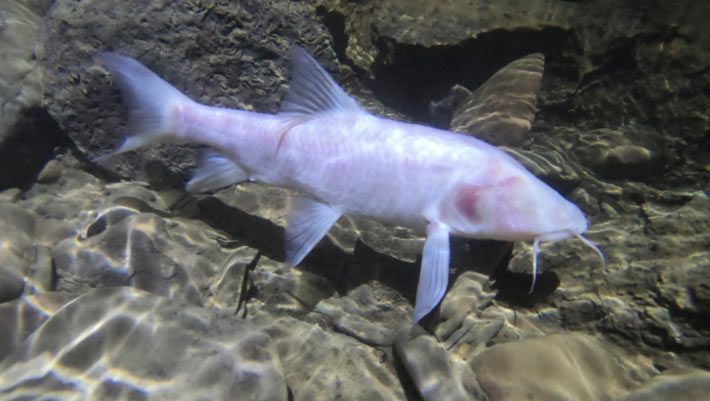Deep in some underground pools lives a shadowy creature. Its existence has remained hidden away—until now. But scientists have announced this secretive lifeform to be none other than Neolissochilus pnar. In other words, a fish.
Ok, so a fish might not be as exciting as, say, the Loch Ness Monster. Leading a dark and quiet life in the caves of northeastern India, Neolissochilus pnar, though, has been a puzzle to researchers since its 2019 discovery.
The biggest puzzle is how it gets so big. At nearly 16 inches in length and a pound-and-a-half in weight, the watery pnar doesn’t awe the casual observer. Considering its environment, however, it’s leviathan. Cave-dwelling fish generally adapt to their underground life by staying small. Of nearly 300 subterranean species, most measure just a few inches.
The petite size helps those fish survive in cramped conditions with little nourishment. That’s one reason why you’ll never find the giant kraken residing in some isolated cave pool—what would it eat? Yet when scientists discovered the pnar, they couldn’t find a major food source—there was no plant life, and not enough bat guano to sustain the pnar population. One guess is that it feeds on debris washed into the caves during seasonal floods: tree leaves, bamboo shoots, animal carcasses, dead insects.
The pnar has other adaptations that make sense; it’s a translucent, pinky white, since pigmentation has little purpose in the dark, and by adulthood, its eyes have all but disappeared. To us surface-dwelling humans, the Neolissochilus pnar’s life may seem mysterious, even bleak. Yet the pnar cheerfully swims on, keeping its secrets. For now.










